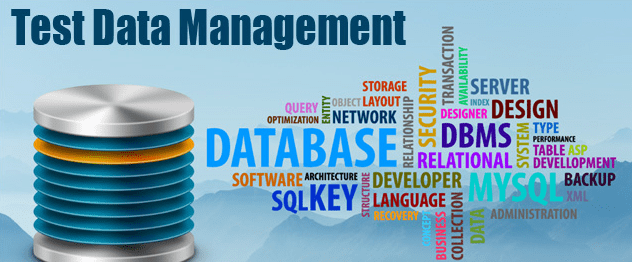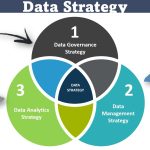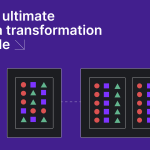A Modern Approach to Test Data Management
Understanding Test Data Challenges
Historically, application teams manufactured data for development and testing in a siloed, unstructured fashion. As the volume of application projects increased, many large IT organizations recognized the opportunity to gain economies of scale by consolidating TDM functions into a single group or department—enabling them to take advantage of innovative tools to create test data. As increasing centralization began to yield large efficiency gains, the scope of TDM was expanded to include the use of subsetting, and later the use of stand-alone masking, to manipulate production data. However, the rise of development methodologies, like DevOps and CI/CD, demanding fast, iterative release cycles and end-to-end API-driven automation has led to a new set of challenges, rendering these legacy approaches obsolete.
Software Development Teams Lack High-Quality Data
Software development teams often lack access to quality test data. All too often, they must work with stale copies of production data due to the complexity of setting up a new test bed. This can result in lost productivity due to time spent resolving data-related issues. It can also lead to increased defect rates due to testing on stale data.
“Within the space, we also see an increased emphasis on test data provisioning, as opposed to merely test data management. This is likely due to continued interest in DevOps practices, as well as Agile and continuous testing. The idea is to provide not only a way to create test data, but a method of distributing it effectively and efficiently to your testers, often via API. The advantage here is a significant improvement to the tester experience and to testing efficiency, thus (one hopes) preventing test data as a whole from becoming a bottleneck to your continuous testing, test automation, or DevOps pipelines.”1
Data Masking is Increasingly Important, but Adds Friction to Release Cycles
For many applications, such as those processing credit card numbers, patient records, or other sensitive information, anonymizing sensitive data is critical to ensuring regulatory compliance and protecting against data breach. According to the Ponemon Institute, the cost of a data breach—including the costs of remediation, customer churn, and other losses— averages $3.9 million.2 However, identifying and masking sensitive data then delivering it, using traditional methods, often adds operational overhead; an end-to-end legacy masking process may take an entire week or more, resulting in delayed test cycles.
Test Data Requirements Increase Storage Needs and Carbon Footprint
IT organizations, using legacy TDM methods, create multiple, redundant copies of test data, resulting in inefficient use of storage, increasing costs and environmental impact. To meet concurrent demands within the confines of storage budgets and sustainability requirements, test data availability must be coordinated across multiple teams, applications, and release versions. As a result, development teams often contend for limited, shared environments, resulting in the serialization of critical application projects. This reduces application release speed and quality
Key Elements of a Modern Approach to Test Data Management:
Automation: Automation is a key element of a modern approach to test data management. This includes using automated tools and scripts to create, manage, and maintain test data. Automation can help reduce the time and effort required for test data management, while also improving the accuracy and consistency of the test data.
Virtualization: Virtualization is another key element of a modern approach to test data management. This includes using virtual environments and data to create realistic test scenarios. Virtualization can help reduce the cost and complexity of test data management, while also improving the accuracy and effectiveness of the tests.
Self-Service: Self-service capabilities are also an important element of a modern approach to test data management. This includes providing developers and testers with self-service tools and interfaces that enable them to create, manage, and maintain their own test data. Self-service capabilities can help improve the speed and agility of the testing process, while also reducing the burden on IT teams.
Step-by-Step Guide to Implementing a Modern Approach to Test Data Management:
Assess current state: The first step in implementing a modern approach to test data management is to assess the current state of test data management. This includes identifying the current processes, tools, and systems used for test data management, as well as the challenges and pain points associated with these processes.
Define requirements: The next step is to define the requirements for the new approach to test data management. This includes identifying the key capabilities and features that are needed, as well as the desired outcomes and benefits.
Select tools and platforms: The next step is to select the tools and platforms that will be used to implement the new approach to test data management. This includes evaluating the available options and selecting the tools and platforms that best meet the defined requirements.
Build and configure: The next step is to build and configure the new test data management environment. This includes setting up the necessary infrastructure, configuring the tools and platforms, and creating the necessary processes and workflows.
Test and validate: The next step is to test and validate the new test data management environment. This includes testing the new processes, tools, and platforms, as well as validating the data quality and accuracy.
Deploy and monitor: The final step is to deploy the new test data management environment and monitor its performance over time. This includes monitoring the data quality and accuracy, as well as continuously improving the processes, tools, and platforms as needed.
Conclusion: A modern approach to test data management can help improve the efficiency and effectiveness of test data management, while also reducing the time, cost, and complexity of the testing process. By leveraging automation, virtualization, and self-service capabilities, organizations can create a more agile and effective testing environment that enables them to deliver high-quality software applications faster
Add Comment
You must be logged in to post a comment.








